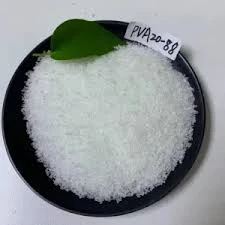The Versatile World of Cellulose Nature's Sustainable Material
Cellulose, a complex carbohydrate, is the most abundant organic polymer on Earth, playing a crucial role in the structure of plants. Composed of long chains of glucose units, cellulose provides rigidity to plant cell walls, making it essential for plant growth and survival. However, cellulose's significance extends far beyond botany; it has a myriad of applications that make it a critical resource in various industries, particularly in the realm of sustainable materials.
One of the most remarkable attributes of cellulose is its biodegradability. Unlike synthetic materials that contribute to environmental pollution, cellulose can naturally decompose, returning to the ecosystem without leaving harmful residues. This property enhances its appeal as a sustainable alternative to plastics and other non-biodegradable materials. As the global eco-consciousness rises, industries are increasingly looking to cellulose as a viable solution for more sustainable practices.
In the textile industry, cellulose is predominantly found in the fibers of plants such as cotton, flax, and hemp. These fibers are processed to create textile products that are not only beautiful and comfortable but also environmentally friendly. Unlike synthetic fibers, which are derived from petrochemicals, cellulose-based textiles offer breathability, moisture management, and comfort while posing a lower ecological footprint. Innovations in textile manufacturing, such as lyocell (often branded as TENCEL), have further showcased cellulose's potential. Lyocell fibers are produced through an environmentally sound closed-loop process that recycles water and solvents, minimizing waste.
In the food industry, cellulose's unique properties make it an invaluable additive. It acts as a thickener, stabilizer, and bulking agent, offering enhanced texture and increased shelf-life to various products while contributing negligible calories. Moreover, cellulose can aid in the dietary fiber content of processed foods, promoting digestive health. Its versatility in food applications highlights cellulose's role in both enhancing food quality and addressing health concerns related to nutrition.
cellulose material

The pharmaceutical sector also benefits significantly from this natural polymer. Cellulose is commonly used in the production of tablets and capsules, serving as a binder, disintegrant, and filler. Its non-toxic nature and optimal compatibility with human physiology make cellulose an ideal candidate for drug formulation. Moreover, cellulose derivatives, such as methylcellulose and carboxymethylcellulose, are widely utilized as emulsifiers and thickening agents in various pharmaceutical applications.
In the realm of sustainable packaging, cellulose is increasingly being recognized for its potential to replace conventional plastic. Films made from cellulose not only provide excellent barrier properties against moisture and oxygen but are also compostable and biodegradable. Companies are exploring cellulose-based packaging materials to reduce plastic waste, meeting the growing demand for sustainable alternatives in consumer goods.
Furthermore, cellulose nanofibers and nanocrystals represent the forefront of innovation, offering a range of new opportunities across industries. These nanostructured materials possess unique mechanical and barrier properties, making them suitable for applications in advanced composites, coatings, and biomedical materials. The material's lightweight and high-strength characteristics position cellulose nanomaterials as promising candidates for developing innovative, environmentally friendly products.
In conclusion, cellulose stands out as a versatile and sustainable material with numerous applications spanning various industries. Its biodegradability, non-toxic properties, and wide-ranging functionalities make it a cornerstone of eco-friendly innovation. By harnessing the potential of cellulose, we can pave the way for a more sustainable future, reducing our dependence on fossil fuels and minimizing environmental impact. As we continue to explore cellulose in new ways, its role as a key component in achieving sustainability goals will undoubtedly expand, opening new avenues for research and development.
-
A Comprehensive Guide to Methyl Ethyl Hydroxyethyl Cellulose: Applications and Industry InsightsNewsNov.24,2025
-
Understanding Methyl 2 Hydroxyethyl Cellulose: Uses, Benefits & Industry InsightsNewsNov.24,2025
-
Hydroxyethyl Methyl Cellulose HEMC: Industrial Uses, Benefits & Future TrendsNewsNov.23,2025
-
HEMC Cellulose: Versatile & Sustainable Industrial Polymer | YoungcelNewsNov.23,2025
-
Methyl Hydroxyethyl Cellulose: Versatile Building Block for Industry & SustainabilityNewsNov.23,2025
-
CAS 9032 42 2: Understanding Polyvinyl Alcohol's Impact on Industry & SustainabilityNewsNov.22,2025




